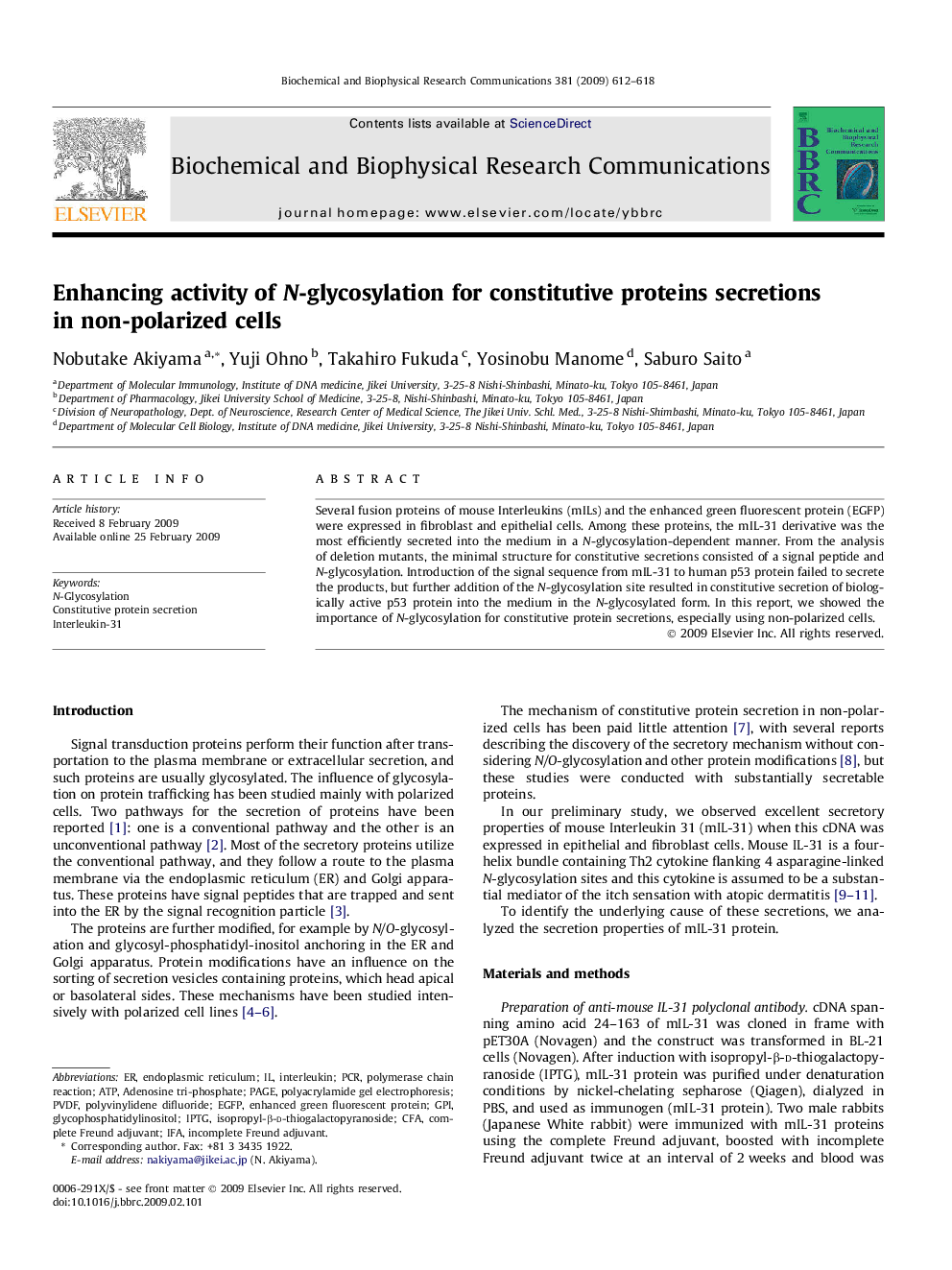| Article ID | Journal | Published Year | Pages | File Type |
|---|---|---|---|---|
| 10766079 | Biochemical and Biophysical Research Communications | 2009 | 7 Pages |
Abstract
Several fusion proteins of mouse Interleukins (mILs) and the enhanced green fluorescent protein (EGFP) were expressed in fibroblast and epithelial cells. Among these proteins, the mIL-31 derivative was the most efficiently secreted into the medium in a N-glycosylation-dependent manner. From the analysis of deletion mutants, the minimal structure for constitutive secretions consisted of a signal peptide and N-glycosylation. Introduction of the signal sequence from mIL-31 to human p53 protein failed to secrete the products, but further addition of the N-glycosylation site resulted in constitutive secretion of biologically active p53 protein into the medium in the N-glycosylated form. In this report, we showed the importance of N-glycosylation for constitutive protein secretions, especially using non-polarized cells.
Keywords
PAGEincomplete Freund adjuvantInterleukin-31IFAGPiCFAeGFPIPTGPVDFN-glycosylationAdenosine tri-phosphateATPpolyacrylamide gel electrophoresisisopropyl-β-d-thiogalactopyranosideinterleukinpolyvinylidene difluorideendoplasmic reticulumpolymerase chain reactionPCRenhanced green fluorescent proteinComplete Freund adjuvantglycophosphatidylinositol
Related Topics
Life Sciences
Biochemistry, Genetics and Molecular Biology
Biochemistry
Authors
Nobutake Akiyama, Yuji Ohno, Takahiro Fukuda, Yosinobu Manome, Saburo Saito,
